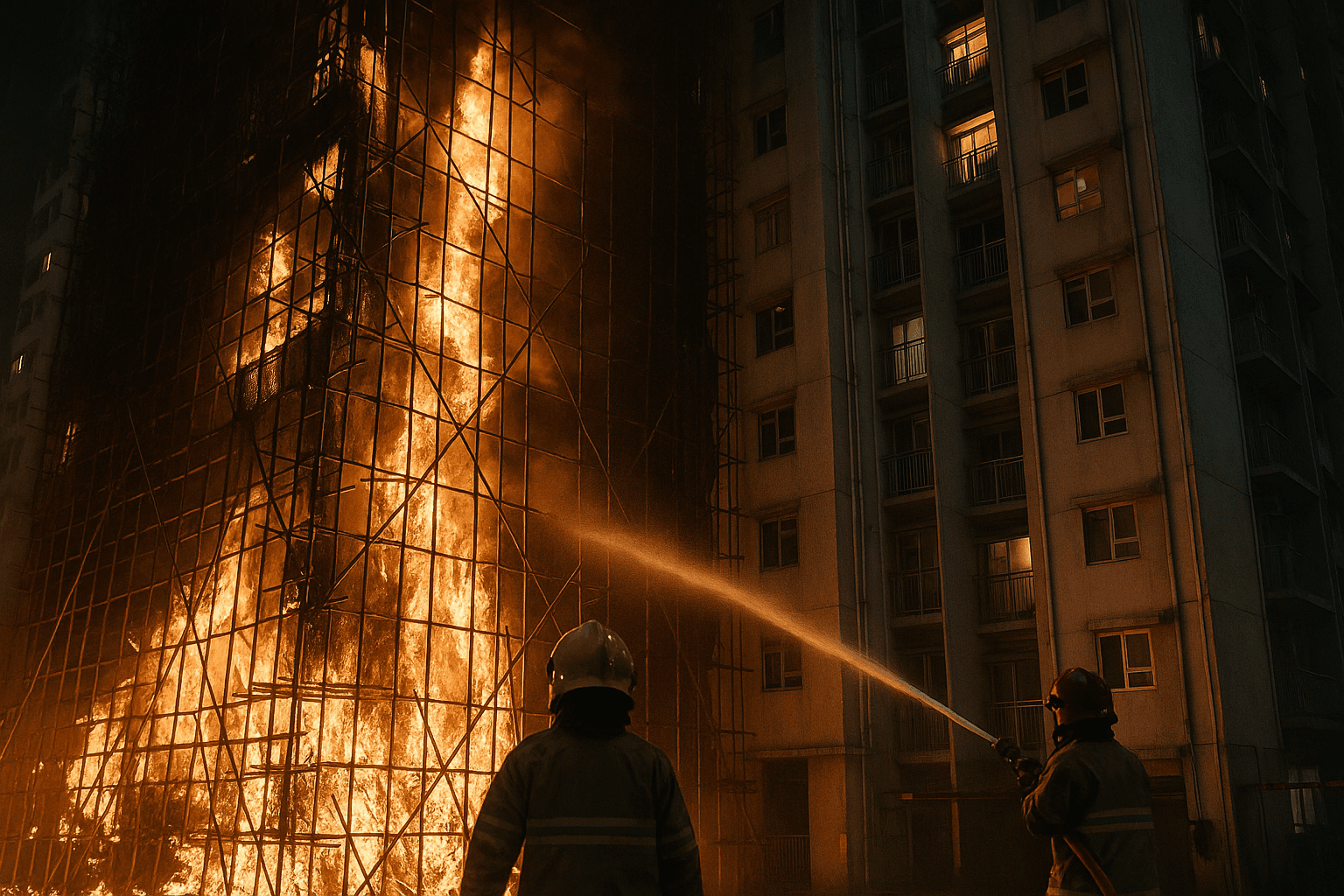Bamboo scaffolding fuels deadly blaze at Hong Kong housing complex
A fast moving fire at a Tai Po high rise housing complex is killing at least four people and injuring several others, authorities say, as flames race along bamboo scaffolding wrapped around multiple tower blocks. The blaze exposes lingering safety risks in Hong Kong construction practices, raising urgent questions about regulation, enforcement and the economic cost of phasing out a long standing building method.

A fierce fire is sweeping the exterior of a high rise housing complex in Hong Kong’s Tai Po district on Wednesday, spreading rapidly along bamboo scaffolding and protective netting that wrap several tower blocks. Authorities report at least four people dead and several others injured, while multiple residents were initially reported trapped. Emergency services have upgraded the response to major No. 4 and No. 5 alarms as firefighters deploy dozens of engines and ambulances and crews work to contain the flames.
Video and eyewitness accounts show plumes of smoke and columns of fire leaping from one level to another as scaffolding acted as a conduit across adjoining façades. Hundreds of residents have been evacuated and authorities have directed road closures and diversions around the site to facilitate rescue operations and limit public exposure. The incident is unfolding on a day when emergency crews remain on scene conducting searches and tending to the injured.
Hong Kong officials note that bamboo scaffolding, a material still common across the city despite modern alternatives, contributed to the speed of the fire’s spread. The government previously announced a gradual phase out of bamboo for public works, citing safety concerns and the need to modernize construction practices. That policy is now likely to come under renewed scrutiny as officials, regulators and politicians assess whether the timeline and enforcement are adequate to prevent further tragedies.
The economic and market implications are significant. Transitioning away from bamboo for both public and private projects will increase demand for metal and composite scaffolding systems, raising costs for developers and construction contractors. Smaller firms that specialize in traditional bamboo methods could face lost income and the need to retrain staff. Insurers may reprice property and construction coverage in Hong Kong if regulators do not move quickly to tighten standards and inspections, which could raise premiums for housing estates and public infrastructure projects.

Beyond immediate fiscal effects, the episode highlights long term tensions between cost, tradition and urban safety in a densely built city. Bamboo scaffolding has been prized for its flexibility, low material cost and quick assembly, advantages that have supported a vast retrofit and maintenance sector responsible for an estimated large share of façade works across Hong Kong. At the same time aging building stock, high population density and narrow access routes magnify the risks when fires ignite at exterior surfaces.
Policy choices now will shape both human and economic outcomes. Accelerating the phase out of bamboo would require public investment to subsidize replacements and support workers in the supply chain. Strengthening inspections and enforcement could reduce near term risk but would add administrative burdens. For residents and investors, the disaster is a reminder that infrastructure and building standards are not merely technical matters but determinants of safety and economic stability in one of the world’s most densely inhabited cities.

